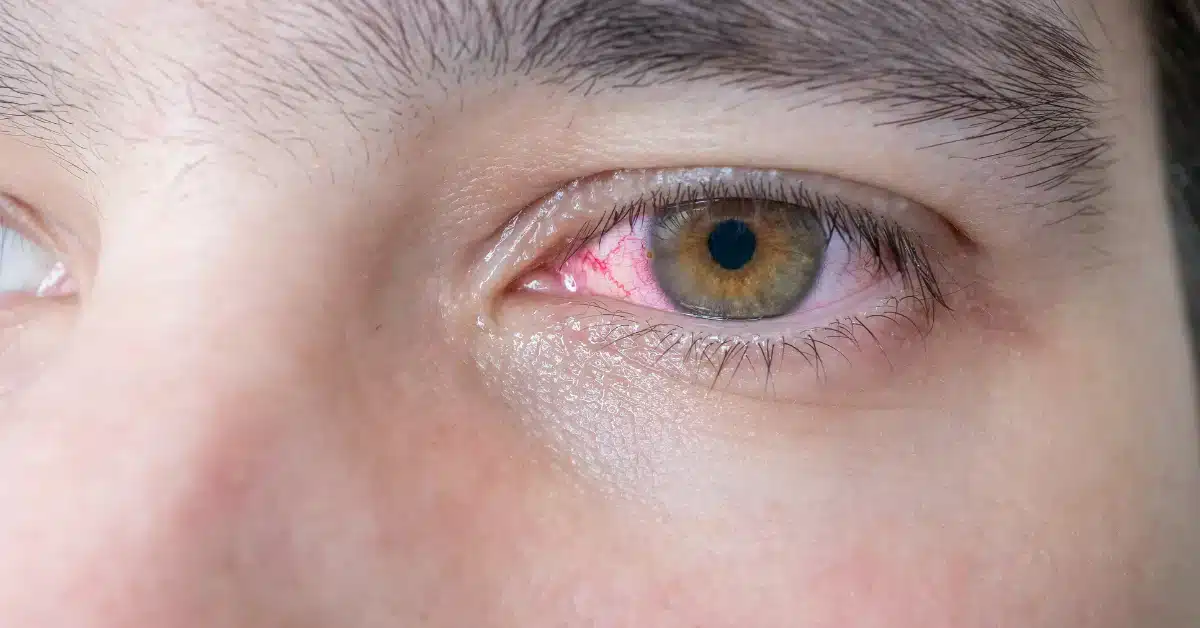Pink Eye vs Allergies: Understanding the Differences and Symptoms
Pink eye is the inflammation of the eye caused due to bacterial infection.
An allergic reaction is any condition where the eyes get infected by a harmful microorganism. It occurs when your immune system reacts to a foreign substance. However, they can be one of the causes of pink eyes.
Both these conditions may show similar symptoms. Despite the similarities in symptoms, pink eye vs allergies can vary greatly.
Pink eye first occurs in one eye and then spreads to the other, whereas allergies can affect both eyes.
As per an estimation, 50 million Americans suffer from allergies each year.
Check with your doctor before getting treatment for any of these conditions.
They can help you know the key differences between pink eye vs allergies and recommend proper treatment.
What’s the difference between pink eye and allergies?
To gain an in-depth understanding of infectious pink eye vs allergies, let’s look at different aspects of these two conditions.
Both conditions are types of Conjunctivitis. Yet, there are a few differences. Let’s discuss this.
Prevalence
According to the Centers for Disease Control and Prevention (CDC), around six million Americans are infected with a pink eye each year.
In adults, viral Conjunctivitis is more common. However, fifty to seventy-five percent of conjunctival infections in children are linked with bacterial pink eye.
Not all allergies affect the eyes; seasonal allergies are responsible for around 95% of allergic Conjunctivitis.
Causes
As discussed above, viral or bacterial pink eye is caused by infectious organisms.
On the other hand, allergies result from exposure to environmental allergens and irritants.
Symptoms
Some of the most common symptoms of infectious pink eye include the formation of a crust on the eyelids, green discharge, watery eyes, and redness.
These cause stickiness of the eyelid to the point that it might be challenging to open the eyes in the morning.
There could be systemic symptoms of infectious pink eye.
Those include Pharyngitis, Adenopathy, Fever, and upper respiratory tract infection.
The symptoms of allergies include
- Irritation
- Red eyes
- Itchy eyes
- Swollen eyelids
- Sensitivity to light
- Watery discharge
Generally, the infection starts in one eye and spreads to the other.
There are many ways to distinguish between allergy and pink eyes.
People having eye allergies have symptoms like scratchy throat, coughing, runny nose, and sneezing.
Moreover, in pink eye, the discharge tends to be watery. In contrast, the release from an infection is usually green or yellow.
Infectious pink eye symptoms or allergies should be immediately evaluated and treated.
These symptoms include swelling or redness of the face near the eyes, loss of vision in one eye, and blurred vision.
Also Read: Go through the article Bacterial Pink Eye Symptoms: Recognize the Signs.
Risk factors
The critical risk factor for viral or bacterial pink eye is coming in contact with someone with an infection.
Direct contact with an infected person will transfer germs from the hand to the eye, causing pink eye.
Dirty or poorly fitted contact lenses can also increase the risk of pink eye. These days children are prone to an eye condition.
On the other hand, the risk factors for allergies include a family history of asthma and allergies.
Diagnosis

An ophthalmologist (eye doctor), optometrist, or primary care physician can diagnose viral or bacterial pink eye vs allergies.
The diagnosis will be based on the patient’s history, symptoms, and medical exams.
To determine what is causing the inflammation, the doctor may check the eyes with a device that flashes a light and magnifies the structures in sight.
In some rare cases, sending a sample of the eye’s lining cells to a lab for cultivation is essential.
This helps determine which bacteria or virus is the root cause of the infection.
These are required only for those with a severe case of the pink eye not responding to standard therapies.
Treatment
It is advised not to self-treat an eye condition.
Make sure to seek medical advice, diagnosis, or treatment from a professional.
In general, pink eyes will run their course and clear on their own.
Eye drops such as cold compresses and artificial tears like Eyemist E/D 10 ml can relieve symptoms.
Treating viral infections is not possible with antibiotic eye drops.
Doctors might recommend antiviral medications if the symptoms worsen or do not improve after a week or so.
Some bacterial conjunctivitis infections resolve on their own.
But, if bacteria bring on pink eye, a doctor may advise using antibiotic eye drops or ointment.
Allergies can be treated with both prescription-based allergies and over-the-counter medicines.
Antihistamine eye drops and oral antihistamines can help relieve symptoms.
Immunotherapy and steroids might be required in more severe cases of pink eye caused by allergies.
Also Read: There are medicines that can help you with pink eye, go through Pink Eye Medicine: How to Choose the Right One.
Prevention
The easiest way to prevent infectious pink eye is to avoid touching your eyes and wash your hands regularly.
When you use dirty hands to rub your eyes, you can transfer viruses or bacteria to the eyes, which causes pink eyes.
It would be best if you also threw away all the old eye makeup like eyeliner and mascara.
Please do not use your contact lenses for longer than recommended, and clean them as your optometrist advises.
You should also schedule regular checkups. This will ensure any eye health problems are caught and treated early.
Allergies can be prevented by limiting exposure to seasonal allergens, including pollen.
Your doctor might recommend using antihistamines medications to prevent allergic Conjunctivitis as well.
When to see a doctor

Now that you know the difference between pink eye vs allergies, here is some advice.
Never try to treat the symptoms of pink eye, infections, or allergies, without medical advice.
Always seek care from a doctor, and do not use someone else’s prescription treatment to treat the symptoms.
The treatment for the symptoms might take days to weeks; always consult your doctor and seek medical advice.
Conclusion
The symptoms of pink eye vs allergies vary from person to person, depending on the condition’s cause, from mild to severe.
People often misunderstand their allergies as conjunctivitis.
But, there is a key difference between them, allergies can affect both eyes simultaneously.
Pink eye affects one eye at a time and then spreads to the other eye.
Even though the distinction between pink eye and allergies is difficult, this article has made it more accessible.
The doctor might look at your medical history and observe your symptoms.
This will help them to determine which pink eye you are suffering from and accordingly seek medical attention.
Frequently Asked Questions
How to know if you have pink eyes or allergies?
Intense itching of the eyes is a common symptom associated only with eye allergies. Eye allergies usually affect both eyes at once. Whereas viral Conjunctivitis causes pink eye, often starting in one eye and spreading to the other.
Can pink eyes be mistaken for allergies?
Yes, pink eye is often confused with allergic Conjunctivitis caused by a conjunctiva viral infection due to similar symptoms. Pink eye first occurs in one eye and then spreads to the other one, whereas allergies can affect both eyes.
What does pink eye feel like when it first starts?
When pink eye first starts, you might feel a sensation of itching, redness, and grittiness in your eye. You might often notice a discharge forming a crust on your eyelashes at night.
Can pink eye and allergies occur together?
Yes, both pink eye and allergies can occur together. The pink eye starts in one eye and spreads to the other, whereas allergies can affect both eyes.
WowRx uses only high-quality sources while writing our articles. Please read our content information policy to know more about how we keep our content reliable and trustworthy.






